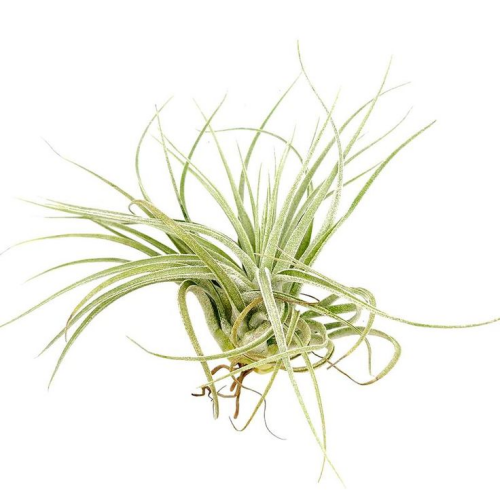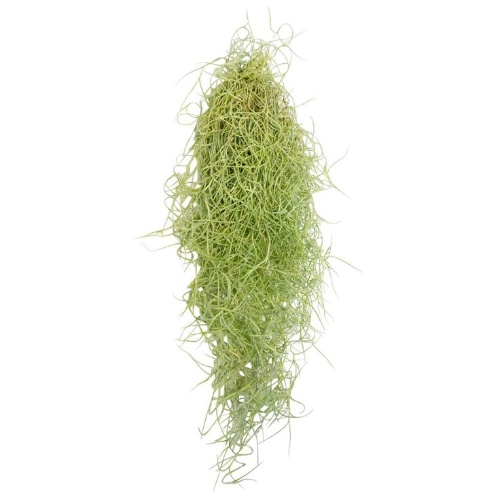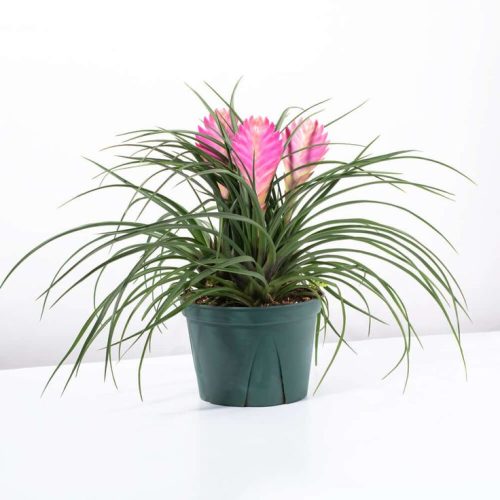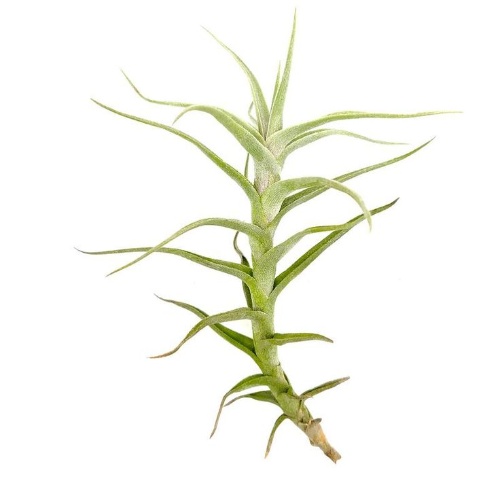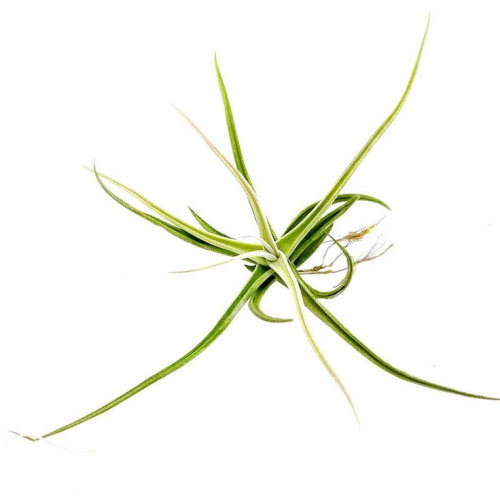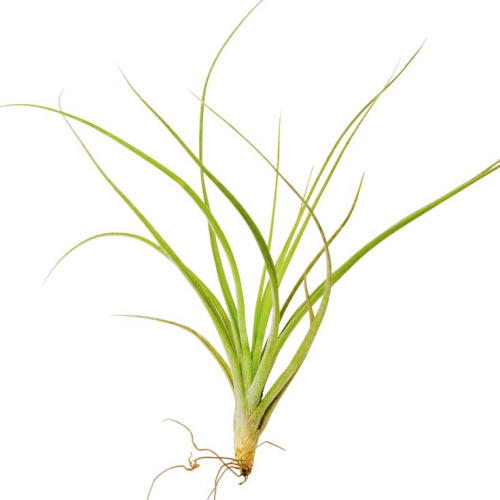Tillandsia Brachycaulos
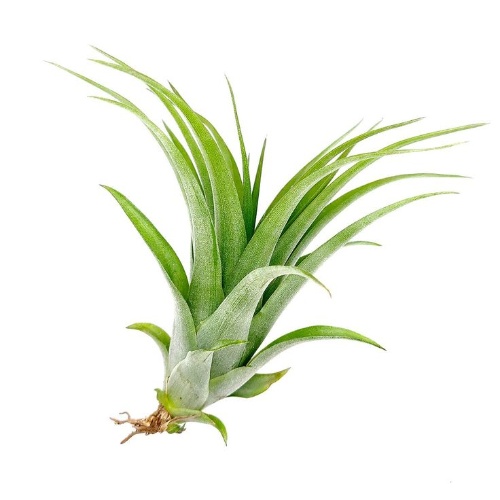
- Botanical Name: Tillandsia brachycaulos
- Family Name: Bromeliaceace
- Ị ga: 9-11 Inch
- Temeprature: 10°C~32°C
- Others: Likes moist, airy, light, diffused.
Nlebazi anya
Nkọwa nke ngwaahịa
Tillandsia Brachycaulos’ Colorful Conquest of the Air Plant World
Tildandsia Brachycaus, na-egbo site na oke ohia nke Central America na Venezuela, bụ mpaghara obodo dị ka Mexico, Honduras, Guatemala, na El Salvador.
Akwukwo akwukwo nke Tillandssia Brachycaus
This species is renowned for its distinctive appearance, featuring long, slender leaves that curl and twist, resembling snakes, which is why it’s named after the mythical Medusa. The leaves are typically gray-blue and arranged in a rosette pattern, reaching up to 25 centimeters in length.
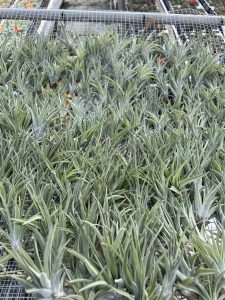
Tillandsia Brachycaulos
Njirimara Infores nke Tillandsia Brachycaus
Ifuru nke Tillandsia Brachycaulos bụ tubular na acha anụnụ anụnụ-acha ọbara ọbara, na-abụkarị ifuru n'oge ọkọchị. Tupu okooko, epupụta ga-acha ọbara ọbara, wee jupụta mmanya na-acha odo odo ga-ama ifuru na etiti nke akwụkwọ.
Tillandsia Brachycaulos, also known as the short-stemmed air plant, turns red before flowering mainly due to the accumulation of anthocyanins and photosynthesis under ample light conditions, which leads to a change in leaf color. This color change is not only a physiological response but also an ecological adaptation strategy to attract pollinators such as insects, helping the plant overcome the disadvantage of small flowers being less likely to be pollinated. Additionally, the leaf color of Brachycaulos changes with temperature variations, turning fully red in low temperatures and green in high temperatures, demonstrating the plant’s adaptability to environmental temperature changes. Therefore, this reddening phenomenon is a comprehensive reflection of Tillandsia Brachycaulos’ physiological functions, ecological interactions, and environmental adaptability.
Tillandsia Brachycaulos: The Red-Stemmed Enigma’s Environmental Demands
-
Kemfe: Osisi ikuku a chọrọ ìhè na-egbu egbu, na-ezere ìhè anyanwụ, karịsịa n'ehihie. Ọ bụrụ na ọkụ dị ndụ dị iche iche dị, enwere ike iji isi iyi ọkụ na-eme, yana obere awa 10 awa nke ọkụ ọkụ chọrọ.
-
Temperacho: Osisi ikuku a, ala ala na-ekpo ọkụ n'ógbè Central na South America, abụghị ntu oyi na-anagide. Ọ nwere ike iguzogide ọnọdụ okpomọkụ dị ala dị ka 30 ogo fahrenheit (1 ogo Celsius), mana ekwesịrị ịzere ụdị oyi dị otú ahụ. Ọnụọgụ dị mma dị n'agbata 65 na 90 degrees fahrenheit (18-32 ogo Celsius).
-
Iru mmiri: Ọ bụ osisi ikuku nke hụrụ iru mmiri n'anya na nke na-eme nke ọma na gburugburu ya na 60% ruo 90% iru mmiri, dị ka ụlọ ịsa ahụ na kichin. Ọ bụrụ na gburugburu gburugburu enweghị iru mmiri zuru ezu, na-agbakarị mmiri ugboro ugboro ma ọ bụ mmegide n'etiti sọọsọ dị mkpa.
-
Mmiri: Ọ bụ ezie na osisi na-abanye na nri na nri site na akwụkwọ ha, ha dịkwa ha ụtọ. A na-atụ aro ka sook Tillandsia brachycaus na mmiri ruo ihe dị ka nkeji iri, tụgharịa kpodoro isi ala kpọọ nkụ kpamkpam.
-
Fatilaiza: Ọ bụ ezie na osisi na-eme ngwa agha adịghị mkpa njikọta, na-eji fatịlaịza mmiri dị iche iche ma ọ bụ fatịlaịza dị iche iche ugboro abụọ n'izu n'oge ọkọchị nwere ike ịkwalite uto.
-
Ala na mgbọrọgwụ: Dị ka epiphyte, osisi a achọghị ala ma enwere ike itinye ya n'elu ala ọ bụla nwere ike ịkwado ha, dị ka akwụkwọ na-adọkasị ya na igbapu.
-
Bloome: Tupu okooko, akwụkwọ nke tildandsia brachycars tụgharịa redy na-acha ọbara ọbara, mgbe ahụ puplecences oge ntoju na etiti nke akwụkwọ.
Zụlite Tildandsia Brachycialos chọrọ izere anyanwụ dị mma, karịchaa n'ehihie, iji gbochie scarchi. Nọgide na-enwe okpomọkụ n'etiti 15-25 Celsius C na iru mmiri na 60-90%. Sook osisi kwa izu maka minit 10 wee hụ na ọ na-eji nke ọma na ọ na-eme ka ire ere ere. Zere ịgbara abalị. Jiri ọgwụ na-eto eto na-eto n'oge na-eto eto n'oge na-etolite uto. Gbaa mbọ hụ na ezigbo mgbasa ikuku ma na-enye nkwado kwesịrị ekwesị maka osisi. Lelee maka pests dị ka aphids na mealybugs. Site n'ịgbaso ntuziaka ndị a, Tillandsia Brachycaus ga-eme nke ọma ma gosipụta ịma mma ya pụrụ iche.





